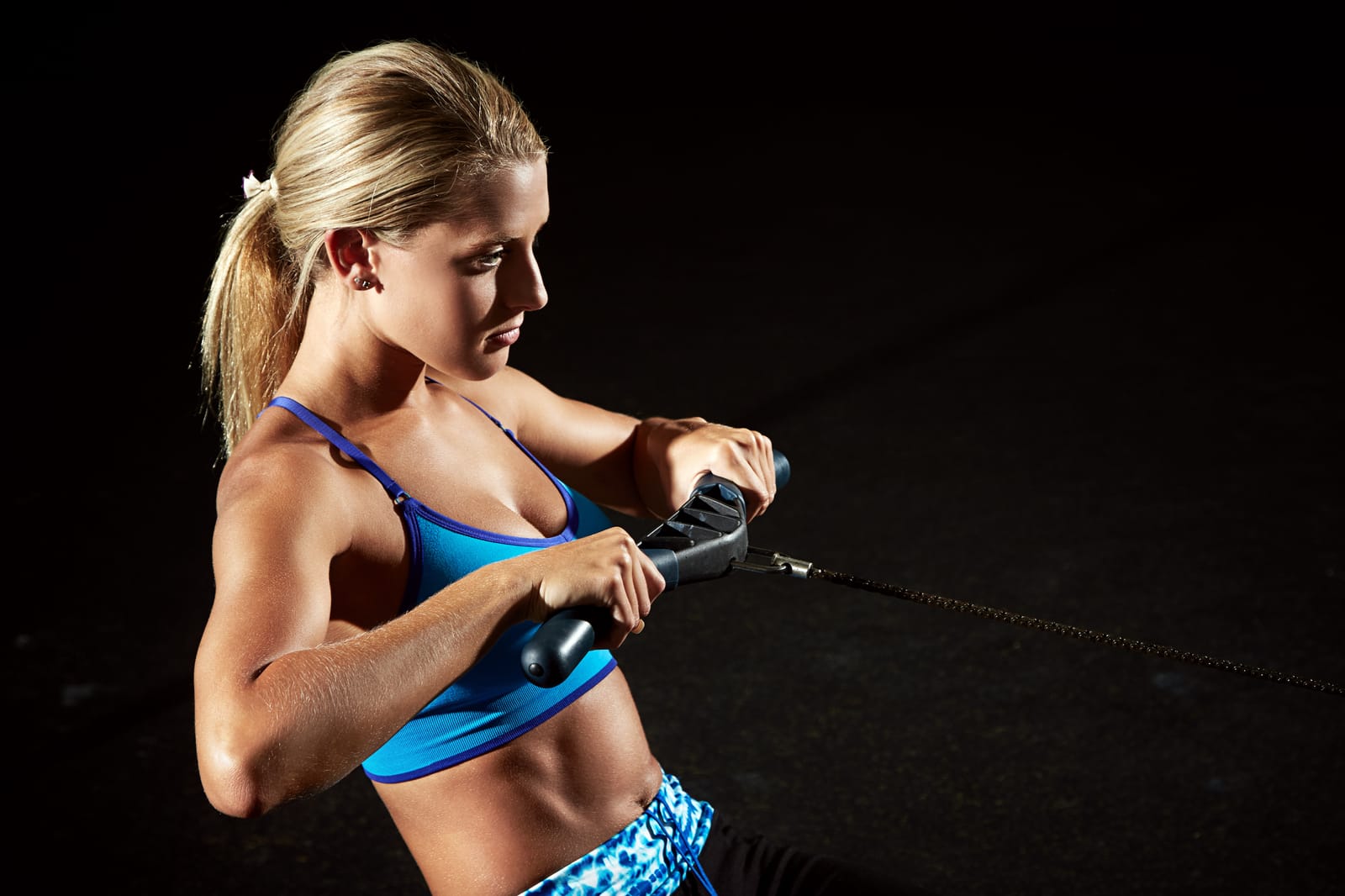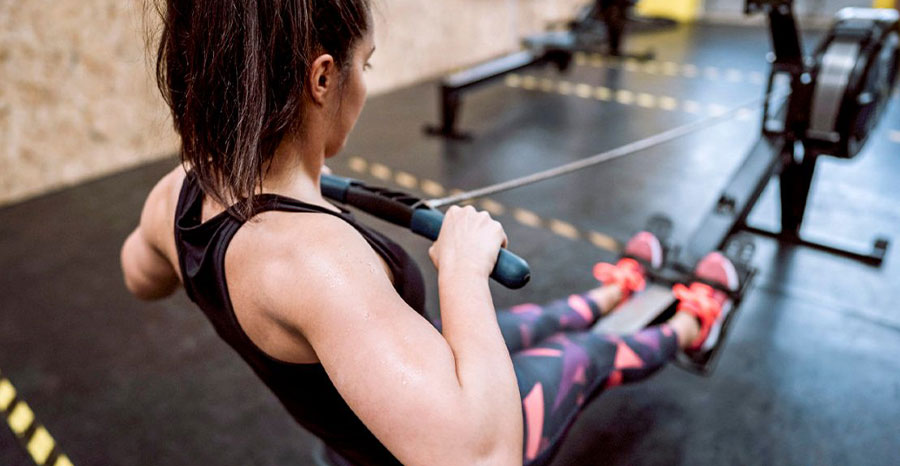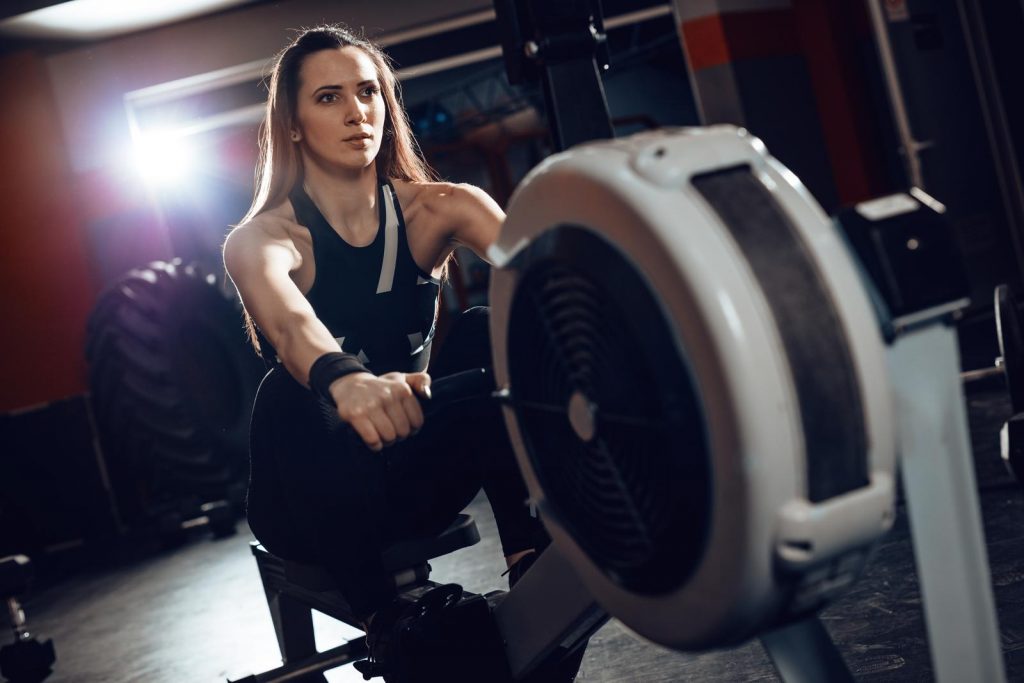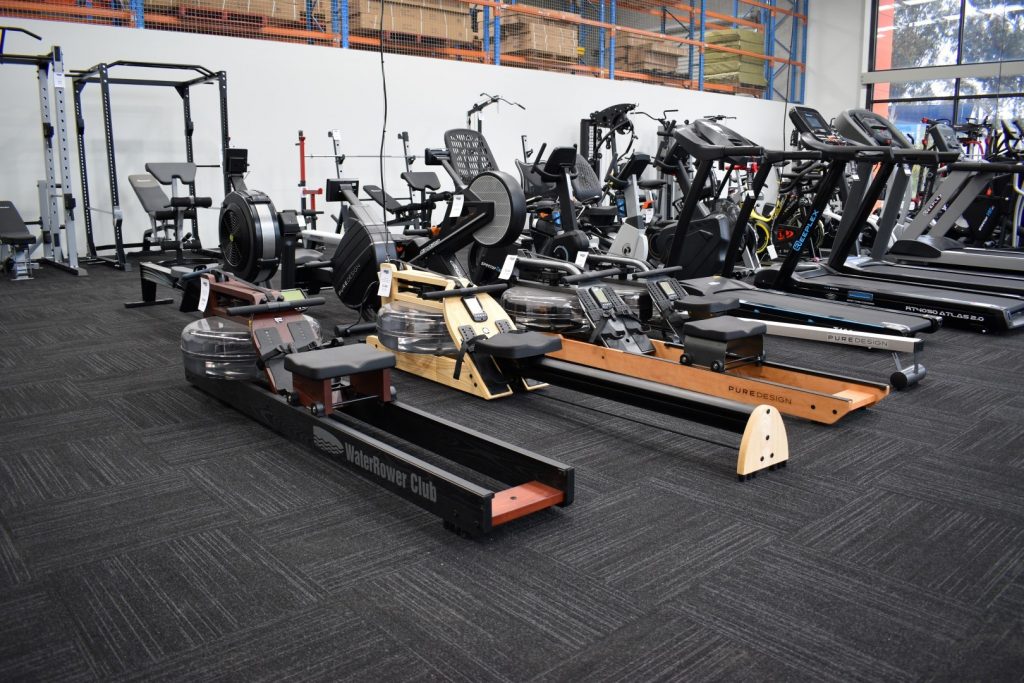
Benefits and Usage of a Rowing Machine in Your Workouts
Rowing machines have emerged as a powerhouse in the fitness world, offering an all-encompassing workout experience. This blog delves into the incredible benefits of incorporating rowing machines gym equipment into your fitness regimen.
In recent years, rowing has gained tremendous popularity among fitness enthusiasts. Its effectiveness in delivering a full-body workout, combined with its low-impact nature, has made it a go-to choice for those looking to enhance their fitness levels.
When it comes to sourcing high-quality gym and cardio equipment in Australia, Dynamo Fitness Equipment stands as the leading authority. With showrooms conveniently located in Melbourne, Sydney, and Perth, and an accessible online store, Dynamo Fitness Equipment makes it easy for people to find and purchase the gym equipment they need to achieve their fitness goals.
The Benefits of Using a Rowing Machine
Cardiovascular Health
Rowing is a superb way to boost your cardiovascular fitness. When you engage in rowing, your heart rate increases, promoting better circulation and oxygen delivery throughout your body. This aerobic exercise strengthens your heart and lungs, enhancing your overall cardiovascular health. With regular rowing sessions, you can expect improved endurance and a reduced risk of heart-related issues.
Full-Body Workout
Rowing machines offer a comprehensive full-body workout like no other. The rowing motion engages multiple muscle groups simultaneously. As you push off with your legs, you activate your quads, hamstrings, and calves. The pulling motion with your arms and shoulders works your biceps, triceps, and deltoids. Additionally, your core muscles play a crucial role in stabilizing your body during each stroke. This comprehensive muscle engagement leads to improved muscle tone and overall body strength.
Low Impact
One of the standout benefits of rowing is its low-impact nature. Unlike activities such as running or jumping, rowing puts minimal stress on your joints. The gliding motion of the rowing machine’s seat is gentle on your knees, hips, and ankles. This makes rowing an ideal choice for individuals with joint issues, arthritis, or those who simply want to exercise without risking joint strain or injury.
Calorie Burning
Rowing is a calorie-burning powerhouse. It’s a highly effective way to shed excess pounds and support weight management. During a vigorous rowing session, you can burn a substantial number of calories. The combination of cardiovascular conditioning and full-body muscle engagement makes rowing an efficient calorie-burning exercise. Whether you’re aiming for weight loss or simply want to maintain a healthy weight, rowing can be a valuable addition to your fitness routine.
Stress Reduction
Beyond its physical benefits, rowing also offers significant mental advantages. Rowing can serve as a form of stress relief and promote mental well-being. The rhythmic, repetitive motion of rowing can be meditative, helping to clear your mind and reduce stress levels. Additionally, the release of endorphins during exercise contributes to improved mood and reduced anxiety. Incorporating rowing into your routine can be an effective way to manage stress and enhance your overall mental health.
Incorporating rowing into your fitness regimen can provide a multitude of advantages, including improved cardiovascular health, a full-body workout, joint-friendly exercise, efficient calorie burning, and stress reduction. Whether you’re a fitness enthusiast or just starting your fitness journey, rowing machines offer a versatile and effective way to achieve your health and fitness goals.
Read Also: A1 Water Rower Rowing Machine Demo
How to Properly Set Up the Rowing Machine

Adjusting the Rowing Machine for Your Body
To maximize the benefits of using a rowing machine and ensure a safe and effective workout, proper setup is essential. Follow these steps to adjust the rowing machine to your body:
- Seat Height: Start by adjusting the seat height so that when you sit on it, your knees are slightly bent when fully extended. This position allows for proper leg engagement during the rowing motion.
- Foot Straps: Secure your feet in the foot straps. Your feet should be flat against the footrest, with the straps snug but not overly tight. This provides stability and prevents your feet from slipping during the workout.
- Handle Position: The handlebar should be within easy reach. When you grip it, your arms should be fully extended, and your wrists should be in a neutral position. Adjust the handlebar height to achieve this alignment.
- Resistance Setting: Most rowing machines have adjustable resistance settings. Beginners should start with a low resistance level and gradually increase it as they become more comfortable with the exercise. Experiment with different resistance levels to find what works best for you.
Machine Setup and Ergonomics
Proper machine setup ensures that you’re using the rowing machine comfortably and efficiently. Consider these ergonomic factors:
- Posture: Maintain an upright posture throughout the workout. Sit tall with your shoulders relaxed and your back straight.
- Hand Placement: Hold the handlebar with an overhand grip, wrists flat, and hands shoulder-width apart. Avoid gripping too tightly; a relaxed grip is sufficient.
- Leg Position: Your legs should remain parallel during the rowing stroke. Avoid letting your knees splay outward or inward.
Breaking Down the Rowing Stroke
Rowing involves a sequential motion that can be divided into four phases: catch, drive, finish, and recovery. Understanding each phase is crucial for maintaining proper form:
- Catch: This is the starting position. Sit forward on the seat, knees bent, and shins vertical. Your arms are fully extended, and you’re leaning slightly forward from your hips. This is the setup for the stroke.
- Drive: Initiate the drive by pushing with your legs while maintaining a firm core. As your legs extend, lean back slightly, and pull the handlebar towards your lower ribs. This phase engages your leg and core muscles.
- Finish: At the end of the drive, your legs are fully extended, and your torso is leaning back slightly. Your elbows are bent, and the handlebar is close to your lower ribs. This phase engages your back and arm muscles.
- Recovery: Reverse the motion by extending your arms first, then pivoting your torso forward, and finally bending your knees to return to the catch position. This phase allows you to reset for the next stroke.
Maintaining Good Form
To make the most of your rowing workout while preventing strain or injury, remember these form tips:
- Smooth, Controlled Motion: Keep the rowing motion smooth and controlled. Avoid jerky movements or rapid pulling.
- Breathing: Coordinate your breathing with your strokes. Exhale during the drive and inhale during the recovery.
- Core Engagement: Maintain a strong core throughout the rowing stroke to stabilize your body and protect your lower back.
- Pacing: Start with a comfortable pace, and focus on form before increasing speed or resistance.
By mastering the proper setup and rowing technique, you can enjoy a safe, effective, and rewarding rowing machine workout that targets multiple muscle groups and provides excellent cardiovascular benefits.
Beginner-Friendly Rowing Workout Routine
If you’re new to rowing, starting with a beginner-friendly workout routine is a great way to build your stamina and confidence. Here’s a simple rowing workout to get you started:
Begin with a 5-minute warm-up to prepare your muscles. Start rowing at a low resistance level and maintain a steady pace.
Perform intervals of rowing with varying intensity. Here’s a basic structure for a 20-minute workout:
- Row for 3 minutes at a comfortable pace as your warm-up.
- Increase the resistance slightly and row at a moderate pace for 2 minutes.
- Raise the resistance again, and row vigorously for 1 minute.
- Return to a low resistance level and row for 2 minutes to recover.
- Repeat this cycle (moderate intensity, high intensity, recovery) for a total of 20 minutes.
Finish your workout with a 5-minute cool-down. Row at a slow pace with minimal resistance to gradually lower your heart rate and relax your muscles.
Read Also: Rowing machines the buying guide
Recommended Durations, Resistance Settings, and Rest Periods
- Warm-up: 5 minutes at low resistance.
- Moderate-Intensity Rows: 2 minutes at medium resistance.
- High-Intensity Rows: 1 minute at high resistance.
- Recovery Rows: 2 minutes at low resistance.
- Repeat the cycle for a total of 20 minutes.
- Cool-down: 5 minutes at low resistance.
Remember, this is a beginner’s workout routine, and you can adjust the intensity, duration, and resistance settings based on your fitness level. As you become more comfortable with rowing, you can gradually increase the duration and resistance to challenge yourself further.
Safety Precautions When Working Out With Rowing Machines
Using a rowing machine is generally safe, but it’s essential to follow safety measures to prevent any mishaps or injuries:
- Warm-Up: Always start with a proper warm-up to prepare your muscles for the workout. Cold muscles are more prone to strain.
- Proper Form: Focus on maintaining the correct rowing technique to avoid putting excess strain on your back, knees, or shoulders. Refer to the earlier section on correct rowing techniques for guidance.
- Resistance Level: Begin with a low resistance level if you’re a beginner and gradually increase it as your fitness improves. Avoid starting at a high resistance level, which can strain your muscles.
- Foot Straps: Ensure that your feet are securely strapped in to prevent slipping during the rowing motion.
- Monitor Heart Rate: If you have a heart condition or are new to exercise, monitor your heart rate and stay within a safe range. Consult your healthcare provider if you have any concerns.
- Hydration: Stay hydrated before, during, and after your workout to prevent dehydration.
- Listen to Your Body: If you experience pain, discomfort, or dizziness during your workout, stop immediately and seek medical attention if necessary.

By following these safety precautions and starting with a beginner-friendly workout routine, you can enjoy the benefits of rowing while minimizing the risk of injury. Remember that consistency and gradual progression are key to long-term fitness success.
Different Types of Rowing Machines
Rowing machines come in various types, each offering a unique exercise experience. Here’s an overview of the most common types:
- Water Rowers: Water rowing machines simulate the feel of rowing on water. They use a water tank or reservoir to create resistance and the resistance level increases with the intensity of your strokes. These machines are known for their smooth and natural rowing motion.
- Air Rowers: Air rowing machines, also called fan rowers, use a flywheel with adjustable resistance. The resistance is determined by the speed at which you row; the faster you row, the higher the resistance. Air rowers provide a dynamic and challenging workout.
- Magnetic Rowers: Magnetic rowing machines use magnets to create resistance. They offer a quiet and smooth rowing experience with adjustable resistance levels. Users can easily change resistance settings to suit their preferences.
- Hydraulic Rowers: Hydraulic rowing machines use pistons filled with hydraulic fluid to provide resistance. These machines are often compact and affordable, making them suitable for home use. Resistance is adjusted by changing the fluid levels or settings.
Pros and Cons of Each Type
- Water Rowers:
- Pros:
- Realistic rowing experience with the sound and feel of water.
- Smooth and quiet operation.
- Resistance increases with your effort.
- Minimal maintenance is required.
- Cons:
- Can be relatively expensive.
- Larger and heavier compared to some other types.
- Water may need occasional treatment to prevent algae growth.
- Pros:
- Air Rowers:
- Pros:
- Dynamic resistance that matches your rowing intensity.
- Suitable for high-intensity workouts.
- Common in gyms due to their durability.
- Cons:
- Can be noisy due to the fan.
- The resistance may not be as consistent as other types.
- Pros:
- Magnetic Rowers:
- Pros:
- Quiet and smooth operation.
- Adjustable resistance levels for varied workouts.
- Compact and easy to store.
- Precise resistance control.
- Cons:
- Initially more expensive than hydraulic rowers.
- Not as closely simulative of real rowing as water rowers.
- Pros:
- Hydraulic Rowers:
- Pros:
- Compact and space-saving design.
- Affordable and suitable for beginners.
- Variable resistance settings.
- Cons:
- May have a less fluid and natural rowing motion.
- Resistance can feel less consistent than other types.
- Pros:
Which Rowing Machine is The Right Type For You?
Choosing the right rowing machine depends on individual preferences and fitness goals. Readers should consider factors such as budget, available space, noise tolerance, and the type of workout experience they desire. Those seeking a realistic rowing experience might prefer water rowers, while those focused on high-intensity workouts may opt for air rowers.

Magnetic rowers are versatile and suitable for various fitness levels, while hydraulic rowers are a cost-effective choice for beginners.
You should evaluate your priorities and test different types if possible to find the rowing machine that aligns best with your needs and fitness objectives.
Identifying Common Errors When Using Rowing Machines
While rowing machines offer an excellent full-body workout, it’s essential to avoid common mistakes that can hinder your progress and lead to discomfort or injury. Here are some common errors people make when using rowing machines:
- Poor Posture: Slouching or leaning too far forward while rowing can strain your back and diminish the effectiveness of your workout.
- Over-Gripping: Holding the handlebar too tightly can lead to unnecessary tension in your arms and shoulders. This can also impede the fluidity of your rowing motion.
- Ignoring Resistance Settings: Failing to adjust the resistance level to your fitness level can result in an ineffective workout. Using too much resistance may lead to muscle fatigue, while too little may not provide enough challenge.
- Neglecting Proper Technique: Not following the correct rowing technique, including the sequence of catch, drive, finish, and recovery, can lead to inefficient rowing and potential strain.
- Rowing Too Fast: Relying on speed over proper form can lead to injuries and reduced workout benefits. A controlled and deliberate rowing motion is more effective.
Explaining the Potential Consequences
Understanding the potential consequences of these mistakes can motivate you to avoid them:
- Poor Posture: Slouching can lead to back pain and discomfort. It also reduces the engagement of core muscles, minimizing the effectiveness of your workout.
- Over-Gripping: Gripping the handlebar too tightly can cause hand and wrist discomfort. It can also create unnecessary tension in your upper body, limiting your endurance.
- Ignoring Resistance Settings: Inadequate resistance may not challenge your muscles enough, resulting in slower progress. Excessive resistance can lead to muscle strain and fatigue.
- Neglecting Proper Technique: Incorrect technique can lead to strain or injury in the lower back, knees, or shoulders. It also reduces the efficiency of your workout, making it less effective.
- Rowing Too Fast: Rowing rapidly without proper form increases the risk of injury and diminishes the workout’s overall benefits. It can also lead to premature muscle fatigue.
Guidance on How to Correct These Errors
To maximize the benefits of your rowing workout and minimize the risk of injury, follow these guidelines to correct the common mistakes:
- Proper Posture: Sit upright with a straight back, shoulders relaxed, and core engaged. Keep your chest up and avoid leaning too far forward.
- Gentle Grip: Hold the handlebar with a relaxed grip, allowing your wrists to remain in a neutral position. Avoid over-gripping to reduce tension in your upper body.
- Adjust Resistance: Set the resistance level to match your fitness level. Start with a comfortable level and gradually increase it as you become stronger.
- Master Technique: Focus on the correct rowing technique, including the catch, drive, finish, and recovery phases. Use instructional videos or seek guidance from a trainer if needed.
- Controlled Pace: Row with a controlled and deliberate pace, prioritizing proper form over speed. Pay attention to each stroke to ensure it follows the correct sequence.
By avoiding these common mistakes and practicing proper rowing techniques, you can make the most of your rowing workouts, reduce the risk of injuries, and achieve your fitness goals more effectively.
Ways to Integrate Rowing Machines Gym Equipment into Various Workout Plans
Rowing can be a versatile addition to your fitness routine, whether you’re a beginner or a seasoned athlete. Here are some ways to seamlessly incorporate rowing into your workout plans:
- Cardiovascular Conditioning: Use rowing as a warm-up or cool-down for your regular workouts. A 10-15 minute rowing session at a moderate pace can elevate your heart rate and prepare your body for exercise.
- Interval Training: Rowing is excellent for interval training. Alternate between short bursts of high-intensity rowing and brief recovery periods. For example, row vigorously for 30 seconds and then row slowly for 60 seconds. Repeat this cycle for a set duration.
- Cross-Training: Combine rowing with other forms of exercise like cycling, jogging, or weightlifting to create a diverse and comprehensive workout routine.
- Full-Body Workouts: Design full-body workout routines around rowing. Incorporate bodyweight exercises like push-ups, squats, and planks between rowing intervals to engage different muscle groups.
- Long-Distance Rowing: If endurance is your goal, aim for longer rowing sessions at a consistent pace. Challenge yourself by gradually increasing the duration of your rows.
- Recovery Days: On recovery days, use rowing as a low-impact, gentle workout to keep your body active without overexertion.
Tips on Setting Goals and Tracking Progress
Setting clear goals and monitoring your progress can help you stay motivated and ensure that rowing contributes effectively to your fitness routine:
- Define Your Goals: Determine what you want to achieve with rowing. It could be weight loss, muscle toning, improved cardiovascular fitness, or a combination of these. Having specific goals will guide your workouts.
- Start with Baseline Measurements: Take initial measurements of your fitness level, such as your rowing time, distance covered, or the number of strokes per minute. Record these metrics to track your progress.
- Create a Workout Plan: Develop a structured workout plan that includes rowing sessions. Specify the frequency, duration, and intensity of your rowing workouts based on your goals.
- Gradual Progression: Gradually increase the intensity and duration of your rowing sessions as your fitness improves. This progressive approach prevents plateaus and reduces the risk of overtraining.
- Use Technology: Many rowing machines come equipped with digital monitors that track your performance. Take advantage of these features to monitor metrics like distance, time, and strokes per minute.
- Keep a Workout Journal: Maintain a journal to log your workouts, including details like distance covered, resistance settings, and any additional exercises performed. This journal will help you track your progress over time.
- Celebrate Milestones: Acknowledge and celebrate your achievements along the way. Meeting your goals, whether big or small, provides motivation to continue.
- Listen to Your Body: Pay attention to how your body responds to rowing. If you experience discomfort or fatigue, adjust your workouts accordingly and allow for adequate rest.
Incorporating rowing into your fitness routine is a valuable step towards achieving your health and fitness goals. By strategically integrating rowing workouts, setting clear objectives, and tracking your progress, you can make the most of this versatile exercise and see tangible results.
Conclusion
Incorporating rowing into your fitness routine can be a game-changer, offering a multitude of benefits, from cardiovascular health to full-body workouts. By avoiding common mistakes and following proper technique, you’ll maximize the rewards of this versatile exercise.
For those seeking high-quality gym and cardio equipment in Australia, look no further than Dynamo Fitness Equipment. As the largest gym equipment store in the country, Dynamo Fitness Equipment boasts showrooms. Check out our gym equipment Melbourne, fitness equipment Sydney, and home gym equipment Adelaide store. We make it convenient for you to explore and try out the latest rowing machines, smith machines, cable machines, and other gym equipment in person.
Can’t make it to a showroom? No problem. Dynamo Fitness Equipment also offers an accessible online store where you can shop for gym equipment and cardio equipment from the comfort of your home. Take the next step in your fitness journey and discover the perfect rowing machine to elevate your workouts today.
